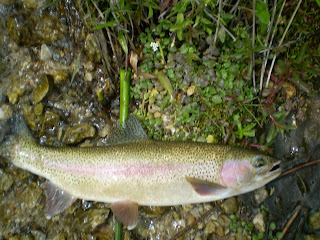Have your back muscles ever hurt after a long day of fly fishing? Mine used to quite often. I would take ibuprofen so I could continue to cast. I would also change my fishing style to not be so aggressive. I would execute shorter casts and perform less mending in the air during the cast and less mending of the line on the water. Rather than lifting my rod to help keep line off the water and to get a longer and better drag free drift I would keep my elbow at my side. I would schedule shorter fishing days because my muscles would hurt after a couple of hours anyway.
I mentioned this back muscle pain to my chiropractor. After checking out my spine and performing some muscle tests he asked me to start doing some shoulder or scapula push-up exercises. I will explain how they are performed. Get down on the floor like you would to do normal push-ups. Rather than bending your arms and bringing your nose to the ground, keep your elbows straight. Let your body drop slightly and bring your shoulder blades close together. Now bring your body up as high as you can. This will bring your shoulder blades far apart. Repeat the process by letting your body drop slightly and bringing your shoulder blades close together and then raising your body causing your back to arch and moving your shoulder blades apart. The chiropractor said to do three repetitions of 10 shoulder push ups four or five times a week. After doing this for a couple of weeks he said to up it to three repetitions of 20. That is what I do now.
I attribute being able to fish aggressively all day long without back pain to this exercise. On five separate week-long trips this past year I was able to fish continuously all day long, all week without the usual pain I would feel.
all day long without back pain to this exercise. On five separate week-long trips this past year I was able to fish continuously all day long, all week without the usual pain I would feel.
I mentioned this back muscle pain to my chiropractor. After checking out my spine and performing some muscle tests he asked me to start doing some shoulder or scapula push-up exercises. I will explain how they are performed. Get down on the floor like you would to do normal push-ups. Rather than bending your arms and bringing your nose to the ground, keep your elbows straight. Let your body drop slightly and bring your shoulder blades close together. Now bring your body up as high as you can. This will bring your shoulder blades far apart. Repeat the process by letting your body drop slightly and bringing your shoulder blades close together and then raising your body causing your back to arch and moving your shoulder blades apart. The chiropractor said to do three repetitions of 10 shoulder push ups four or five times a week. After doing this for a couple of weeks he said to up it to three repetitions of 20. That is what I do now.
I attribute being able to fish aggressively
 all day long without back pain to this exercise. On five separate week-long trips this past year I was able to fish continuously all day long, all week without the usual pain I would feel.
all day long without back pain to this exercise. On five separate week-long trips this past year I was able to fish continuously all day long, all week without the usual pain I would feel.
















































